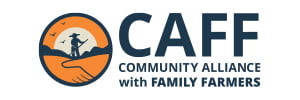All posts in After: Land Management

Guía Sobre Incendios Forestales y Inocuidad Alimentaria
INTRODUCCIÓN La Ley de Modernización de Inocuidad de los Alimentos fue promulgada en 2011 y comprende numerosas normas. Una de ellas es la Norma de Seguridad de los Productos Agrícolas […]

What to Know About Wildfire and Food Safety
Introduction In 2011 the Food Safety Modernization Act was signed into law. Of the many rules in this law, the Produce Safety Rule (PSR) was created to address federal food […]

Gully Stuffing
Gullies pose many threats to farmland, including the removal of fertile topsoil, damage to infrastructure, danger to livestock, and decreased water quality. Also, due to loss of protective vegetation, erosion […]

2019 Camp Fire Water Resources Monitoring and Research Symposium
The symposium brought together researchers who have been investigating the impacts of the Camp Fire and other urban fires in Northern California. Speakers covered a diversity of research conducted on […]

Wildfire and Food Safety References
CAFF’s Wildfire Resilience Program collaborated with the National Farmers Union to create a unique resource called “What to Know About Wildfire & Food Safety”. Be sure to peruse the links […]

Webinar: Post-Fire Remediation and Watershed Defense
From CoRenewal, this webinar features Taylor Bright and Matthew Trumm, who will explain the how, what and why of proposed bioremediation approaches, and lessons learned during post-fire wattle biofiltration installations […]

Episode 2: Wild Oat Hollow Penngrove, CA
In this episode, Sarah Keiser of Wild Oat Hollow in Penngrove, CA describes her entry into ranching and how her love of the land positioned her to become a leader […]

Wildfire Recovery: The Nuts And Bolts Of Resilience With TurkeyTail Farm
Farmers Cheetah and Samantha run TurkeyTail Farm in Yankee Hill, California. During the Camp Fire in Butte County, they were evacuated for 28 days and lost everything but their livestock to severe […]

5 Key Wildfire Resilience Practices
It’s not always obvious that some of the ecological farming practices used frequently by farmers, also provide wildfire protection and recovery benefits. Check out the infographic below which was developed […]

Climate Intervention with Biochar
A White Paper about Biochar and Energy (BC&E) for Carbon Dioxide Removal (CDR) and Emission Reduction (ER).

An Overview of Fire Effects on Soil
Fires in forests and rangelands produce some of the most profound impacts on ecosystems of the Southwest. Wildfires and prescribed fires affect the vegetation, soils, wildlife, and water resources of […]

Sonoma Biochar Project
Biochar is a specialized form of charcoal that is produced by heating biomass using high heat (typically 350 C to 1000 C) in low-oxygen environments, and that is suitable for […]

Mycoremediation in the Wake of the “Camp” Fire
This video outlines some of the concepts and research of fungal bioremediation and the potential to address fire-borne toxins. Topics covered are the types of environmental pollutants that are generated […]

Burned Oaks: Which Will Survive?
Each year fires burn thousands of acres where the predominant vegetation is oak tress and grass. Where fires burn intensely, trees can be totally consumed. In other places, leaves on […]

Seeding After a Fire
After a fire many trees are weakened from burning around the base of the trunk. The trees can fall over or blow down without warning. Shallow-rooted trees can also fall. […]

After the Fires: Hydrophobic Soils
Fire is a natural and important environmental factor that has affected virtually all western U.S. forests at one time or another. However, there are situations where fire can be catastrophic. […]

Recovering from Wildfire, Healing the Land
There’s a human impulse to rebuild, to resume life as it was. In nature, there is the cycle of regeneration that comes after a fire. While our instinct tells us […]

Post-Fire Disaster Publications, USDA
Contour Sandbags, Dikes, Diversion, Erosion Control Mats, Hand Raking, Hazard Tree Removal, Hillside Home, Drainage, Hydromulching, Log Erosion Barriers, Sandbag Barrier, Seeding.

Post Fire Restoration: Dos & Don’ts
While it’s difficult to stand by and “do nothing” it’s important that we do the right things post fire. This tip sheet, especially the Don’ts section, provides invaluable guidance on […]

After the Burn: Managing Forestland After a Wildfire
A comprehensive guide for managing your forestland after a burn, including an assessment tool, emergency rehabilitation, and post fire management practices.
Video: Waterways on Fire Damaged Landscapes
Steep burned hillsides can be unstable in heavy rains, increasing the risk of landsides. To avoid this outcome, use wattles as described above to keep soil from moving downhill and […]




